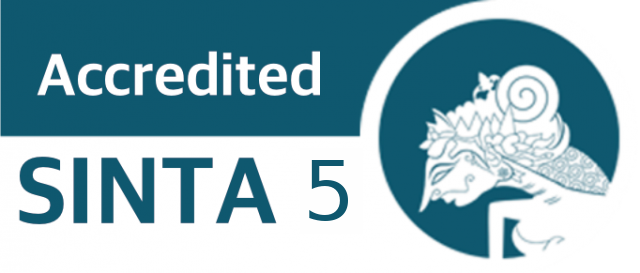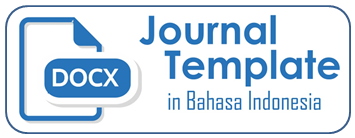ANALISIS KINERJA KEUANGAN DENGAN MENGGUNAKAN METODE CAMEL PADA PT. BANK BUKOPIN YANG TERDAFTAR DI BURSA EFEK INDONESIA TAHUN 2016-2018
Abstract
The research objective is to see the financial performance of PT. Bukopin Bank which is listed on the Indonesia Stock Exchange using the CAMEL method in 2016-2018. The method used is Capital (Capital), Asset (Asset), Management (Management), Earning (Rentability), Liquidity (Liquidity). The result of this research is the CAMEL ratio of the capital, namely the health level at PT. Bank Bukopin in the CAR ratio achieved by PT. Bank Bukopin for 2016 to 2018 amounted to 36.90%, 35.03%, 36.72%. The health predicate of the CAR ratio must be maintained at a safe limit (8%) while the CAR ratio is 36.90%, 35.03%, 36.72% (KPMM ≥ 12%) then PT. Bank Bukopin received a healthy predicate in terms of capital. CAMEL Asset ratio, namely the level of health at PT. Bank Bukopin for 2016 to 2018 amounted to 1.12%, 0.67%, 3.71%. The health predicate of the KAP ratio must be maintained at a safe limit (KAP ≤ 2% while the KAP ratio obtained by PT. Bank Bukopin is 1.12%, 0.67%, 3.71%. KAP ≤ 2%, so PT. Bank Bukopin gets the title healthy in terms of asset quality aspects.The CAMEL Management ratio, namely the 2016 NPM ratio, the NPM value decreased by 72.86%, in 2017 the NPM value increased by 73.68% and for 2018 the NPM value decreased by 51.10%. NPM health must be maintained at a safe limit (100%) while the NPM ratio obtained by PT. Bank Bukopin is 72.86%, 73.68%, 51.10% <100%, so PT. Bank Bukopin gets the title of being healthy in terms of The CAMEL Earning Ratio, namely in 2016 the ROA value increased by 1.24%, in 2017 the ROA value increased by 1.48% and for 2018 the ROA value decreased by 0.16%. In 2016 the ROA ratio was 1.25% < ROA ≤ 1.5% is in the good category, for 2017 an ROA ratio of> 1.5% is in the very category good, while for 2018 the ROA ratio of 0% <ROA ≤ 0.5% is in the very poor category. The CAMEL Liquidity Ratio, namely the LDR Ratio obtained by PT. In 2016, the LDR value increased by 97.51%, in 2017 the LDR value decreased by 86.35% and for 2018 the LDR value increased by 88.98%. Evaluation of the level of health in 2016 to 2018, the LDR ratio of 85% <LDR ≤ 100% is in the fairly good category
References
Basir, B, 2015. Manajemen Kearsipan untuk Lembaga Negara, Swasta dan Perguruan Tinggi. Jakarta:
Bumi Aksara. Fahmi, I. 2013. Analisis Laporan Keuangan. Lampulo: ALFABETA.
Gitosudarmo, I dan Basri. 2012. Manajemen Keuangan. Edisi 4. Yogyakarta: BPFE.
Hadi, S, 2011. Metodologi Research 2, Andi Offset, Yogyakarta
Hanafi, M. 2013. Analisis Laporan keuangan, Yogyakarta: Penerbit UPP AMK YKPN.
Harahap, SS. 2010 . Analisa Kritis atas Laporan Keuangan. Cet 11. Jakarta : PT Raja Grafindo Persada
Horne JC.V dan John M. Wachowicz. 2012. Prinsip– Prinsip Manajemen Keuangan. Jakarta: Salemba Empat.
Ikatan Akuntan Indonesia. 2009. Standar Akuntansi Keuangan. PSAK No.2. Jakarta: Salemba Empat.
Kasmir. 2010. Analisis Laporan Keuangan. Jakarta: PT Raja Grafindo Persada
Kasmir. 2011. Analisis Laporan Keuangan. Jakarta: RajaGrafindo Persada.
Loen, B dan Sony E. 2018. Manajemen Aktiva Pasiva Bank Devisa, Jakarta:PT Grasindo
Munawir, S. 2010. Analisa Laporan Keuangan. Yogyakarta: Liberty
Nazir, M. 2013. Metode Penelitian. Bogor: Ghalia Indonesia
Pudjiastuti E dan Husnan, S, 2016, Dasar-Dasar Manajemen Keuangan, Edisi Ketujuh. Yogyakarta: UPP STIM YKPN.
Rhomy. 2011. Kinerja Keuangan dengan Menggunakan Metode CAMEL Jakarta : PT Raja Grafindo Persada.
Riyadi, S. 2016. Banking Assets And Liability Management, Edisi Keempat, Lembaga Penerbit Fakultas Ekonomi & Bisnis, Uiniversitas Indonesia
Riyanto, B. 2010. Dasar-Dasar Pembelanjaan Perusahaan, ed. 4, Yogyakarta: BPFE.
Simamora, H. 2010. Akuntansi Basis Pengambilan Keputusan Jilid 1. Jakarta: Salemba Empat
Sugiri, S. 2010. Akuntansi Pengantar 2. Yogyakarta : UPP STIM YKPN
Sugiyono, 2016. Metode Penelitian Kuantitatif Kualitatif dan R&D. Bandung: Alfabeta.
Sukmadinata, N.S. 2010. Metode Penelitian Pendidikan. Bandung: Remaja Rosdakarya
Suta, I. P. G. A. 2017. Kinerja Pasar Perusahaan Publik di Indonesia: Suatu Analisis Reputasi Perusahaan. Jakarta: Yayasan SAD Satria Bhakti.










